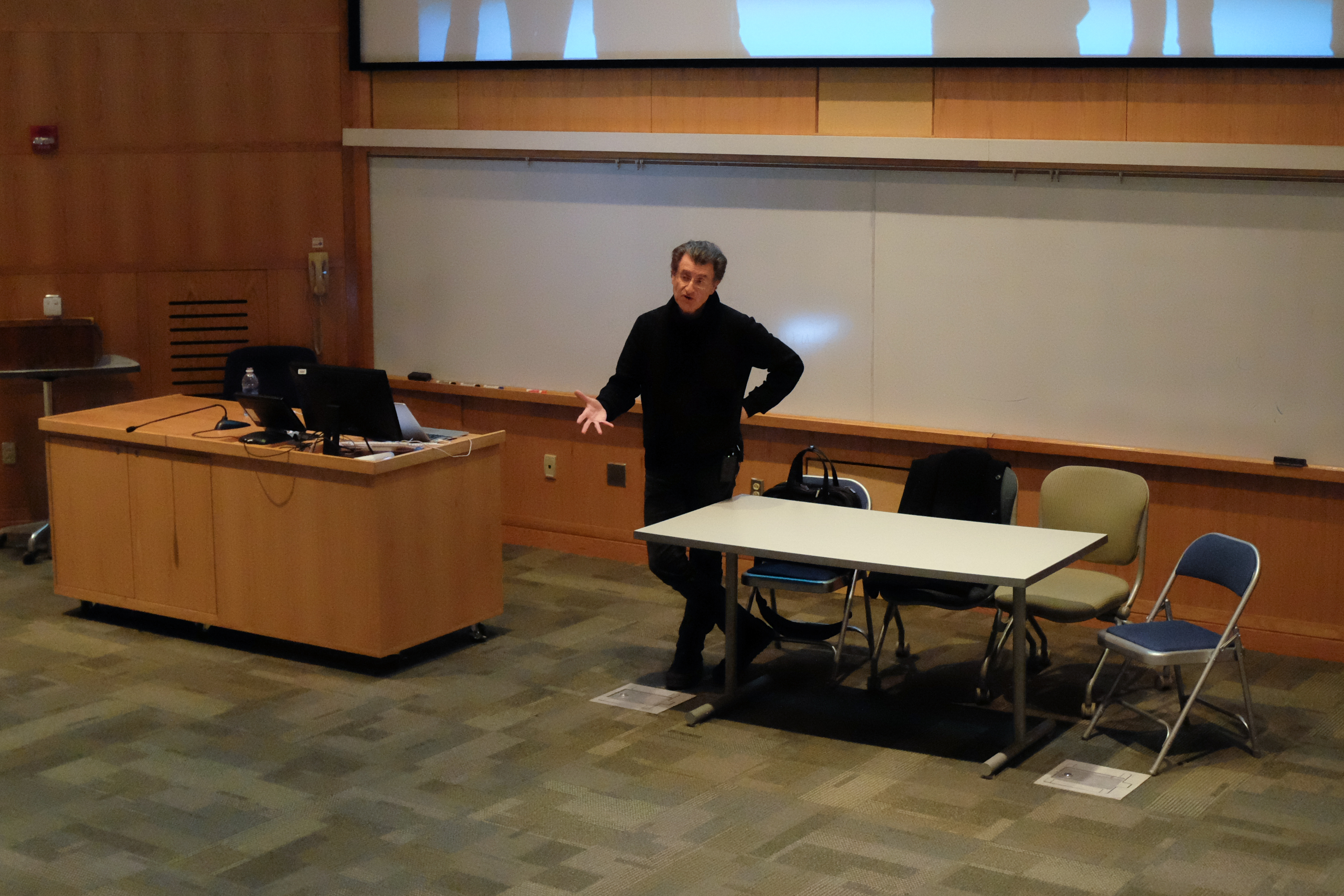
Some people might not think of art as a force for social or political transformation, but one artist, Alfredo Jaar, has been evoking change through art for decades. On March 5, the Chilean-born and New York-based artist, architect, and filmmaker delivered a captivating two-hour lecture to the Hamilton community in a crowded Bradford Auditorium. His talk was part of the Art Department’s Visiting Artist Series.
Jarr is well known for his more than 60 “public interventions” around the globe, works that engage with locations “removed from the art world” and critique a variety of political, economic, and social injustices. Speaking about his conception of the artist’s role, Jaar said, “the artist creates models of the world, and that is how we create change.” Throughout his lecture Jaar presented on a number of the works he has created over the years, explaining the unique societal importance underlying each of them.
One of his most recent installations, “The Geometry of Conscience”, pays tribute to the desaparecidos, victims of Chilean dictator Augusto Pinochet’s 17-year reign. The work, located in Chile’s new Museum of Memory and Human Rights, envelopes visitors in a dark underground room for 60 seconds, before slowly revealing a wall of brightly lit silhouette portraits. As the images’ brightness increases, it forces viewers to look to the side, where mirrored walls duplicate the silhouettes to infinity.
Jaar explained that half the lighted portraits depict desaparecidos while the other half are present-day Chileans, creating a unique tribute to the dead by mixing their faces with the living. As visitors leave the memorial, an “after image effect” produced by the bright lights leaves the silhouettes imprinted in the mind.
Jaar bases his elaborate works off many years of research and most projects take between one and six years to complete. When commissioned to create an installation utilizing Montreal’s historic Cupola of the Marché Bonsecours, it took seven separate visits to the site before Jaar finally found his inspiration, or what he calls the location’s “essence.”
For the final project, titled “Lumiéres dans la ville”, Jarr installed 100,000 watts of red lights in the old building’s cupola and placed push buttons in homeless shelters across Montreal. Whenever one of city’s 15,000 homeless pressed one of the buttons, the cupola dome glowed red for a fraction of a second, producing a steady flash that pierced the night sky for weeks. Jarr described the work as a “portrait of homelessness without displaying any faces”, and explained that the media attention it garnered helped raise awareness of a problem Montreal had ignored for far too long.
Describing his creative process, Jaar said each project forces him to reinvent the wheel, researching and discovering the “essence” behind each “place, community, and moment in time.” He first asks “what should be said”, and then goes about determining “how” to say it. After examining a number of his works throughout the lecture and explaining the context and conceptual processes behind each one, Jaar insisted, “art is 99% thinking and 1% making.”
From protests against government censorship to critiques of the European Union’s exclusionist immigration policies, Alfredo Jaar’s “public interventions” have alerted publics to important matters of injustice around the world. His works seek to “seduce” both the people who view them and the media outlets that report on them, ultimately issuing a call to action and creating an impetus for change.
